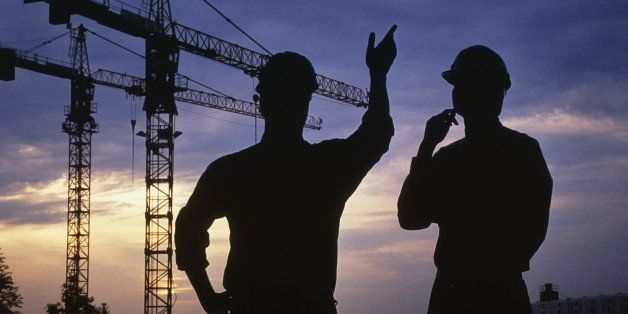
As we mark Labor Day, the same dismal long-term job-patterns persist. The economy is nominally in a recovery, but far too many jobs are insecure and fail to offer a middle class standard of living. Whether the Federal Reserve makes things worse by raising rates, or continues its policy of low interest rates, nothing on the near horizon offers hope of significant change.
Is this just the new normal for reasons that are structural to the new economy -- or are major changes possible?
There is no doubt that the economy could provide better jobs for more people. The problem is that political assumptions of what's possible preclude the policies we need.
For starters, we should be investing many trillions of dollars in the nation's rotting infrastructure, trillions more defending against the coastal flooding that is already upon us, and trillions more on the transition to a sustainable economy.
We can fund most of this by borrowing, and some of it by restoring historic tax rates on the rich.
This is a great time for the government to borrow. Interest costs of funding the debt will never be lower. Those low rates reflect the fact that the private sector cannot find enough productive investment, even given cheap money. Hence the need for public investment.
History's great example is World War II. Despite seven years of New Deal programs, unemployment in 1940 remained stuck at over 13 percent until the War buildup in 1941-42 produced the greatest accidental public investment program ever known. For four years, federal deficits averaged about 25 percent of GDP. Unemployment melted away. Today, fiscal conservatives break into hives when deficits exceed two percent.
The result of all that spending was a wartime full employment economy, whose legacy was the great postwar boom. The debt was not a problem because all of that public spending allowed the economy to at last realize its suppressed potential, and the debt gradually shrank relative to GDP.
In the late 1930s as now, academic economists were gravely stroking their chins and warning that maybe 13 percent unemployment and lackluster performance was the best a modern, automated economy could do. Then as now, they were wrong, as the war proved.
But if we spend, say, a trillion dollars a year for ten years, is there really that much worthwhile to spend on?
Are you kidding?
The American Society of Civil Engineers, not a Bolshevik group, puts the shortfall in basic infrastructure at $3.6 trillion.
That doesn't even buy smart grids and high speed rail, but plain old water and sewer systems, roads, bridges, tunnels, public buildings and the like.
If we want 21st century infrastructure -- modernizing power grids, burying power lines so that they are hurricane proof, transit systems up to European (and Chinese!) standards, the fastest rather than slowest Internet access, that's trillions more. All of this stuff not only produces jobs, but increases the economy's productivity, and creates new domestic industries.
And then, we also need massive investments in a green transition -- so that saving the planet doesn't mean a decline in living standards. Politically, how do you ask Americans to tighten their belts for the sake of the environment when about 80 percent of us have been tightening belts for decades?
But contrary to some who advocate drastic de-materialism, this is mostly a false choice. If we shift to all-renewables and limit resource-intensive predatory agribusiness and find substitute technologies, we can have our planet and good living standards too.
Trillions are also needed for outlays on reclamation of locales destroyed by industry plundering, from the coal canyons of Appalachia to the lead-tainted cities to the ruined bayous of the Gulf Coast. We need a state-of-the art strategy to keep our coasts from being inundated, something the Dutch have been doing for centuries. That means not just construction jobs, but engineering and design jobs.
All of this could provide lots of good jobs and careers, for at least a decade. But the free market and the private sector won't produce any of these outcomes. It will take a national commitment on the scale of World War II (without the war.) Even after our deferred investments are made, we need a permanent, ongoing program of infrastructure spending.
And in the meantime, as manufacturing becomes ever more automated, we can be converting service sector jobs to middle class jobs.
A registered nurse earns about $70,000 a year. A public school teacher earns about $60,000. How about a national policy that everyone providing health and education services shall earn in this range?
How about a far higher minimum wage and policies to bar union-busting, so that retail workers also get paid middle class wages, too. Costco and Trader Joe's manage to pay middle class wages. Why not the whole sector?
All this is attainable. American can be a middle class society again. It just takes far more political imagination and nerve than we have seen lately -- and a politics to demand that our leaders deliver it.
A Happy Labor Day to all.
--
Robert Kuttner is co-editor of The American Prospect and professor at Brandeis University's Heller School. In his spare time, he writes musicals. His latest book is Debtors' Prison: The Politics of Austerity Versus Possibility.
Like Robert Kuttner on Facebook.
